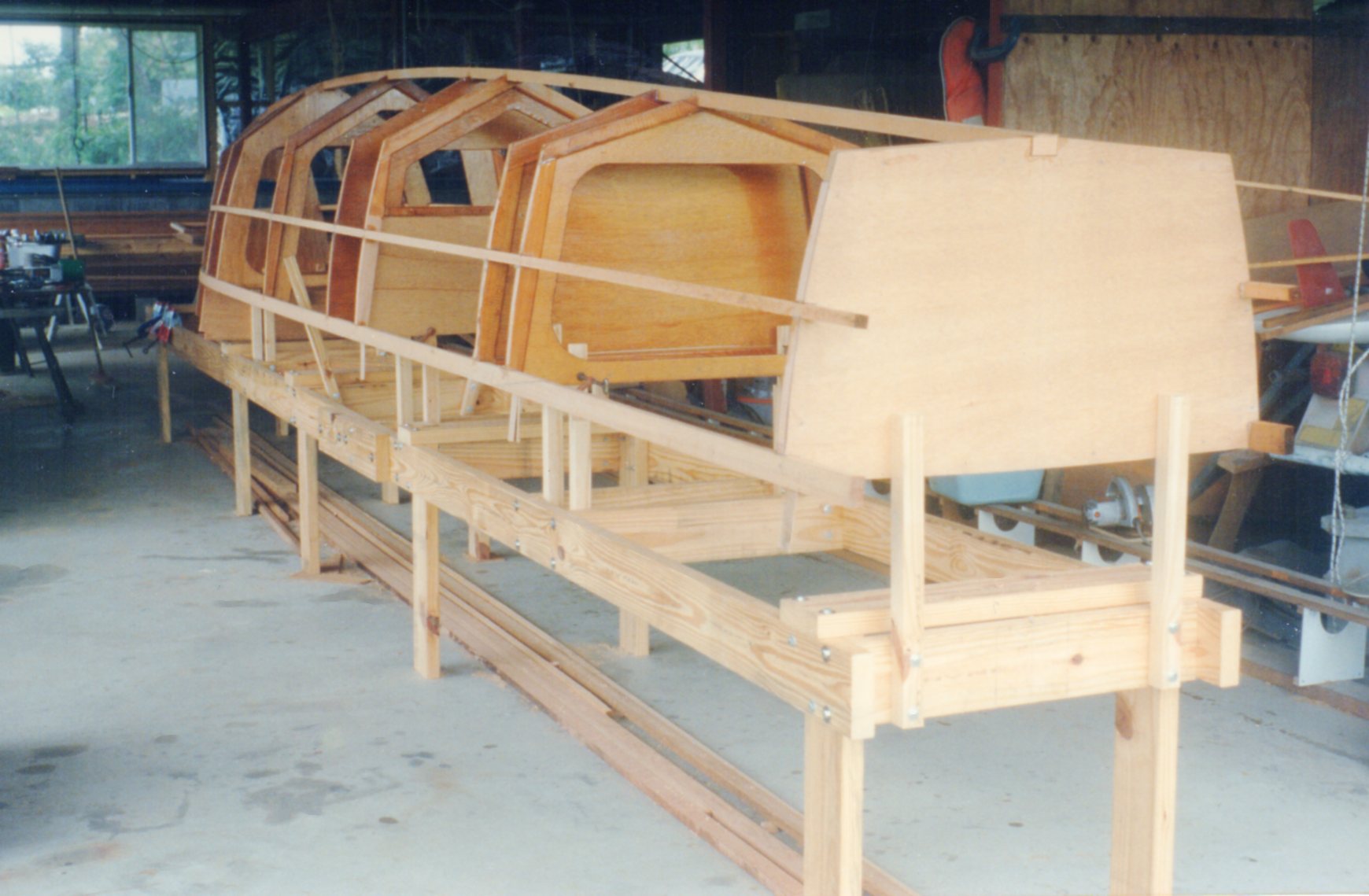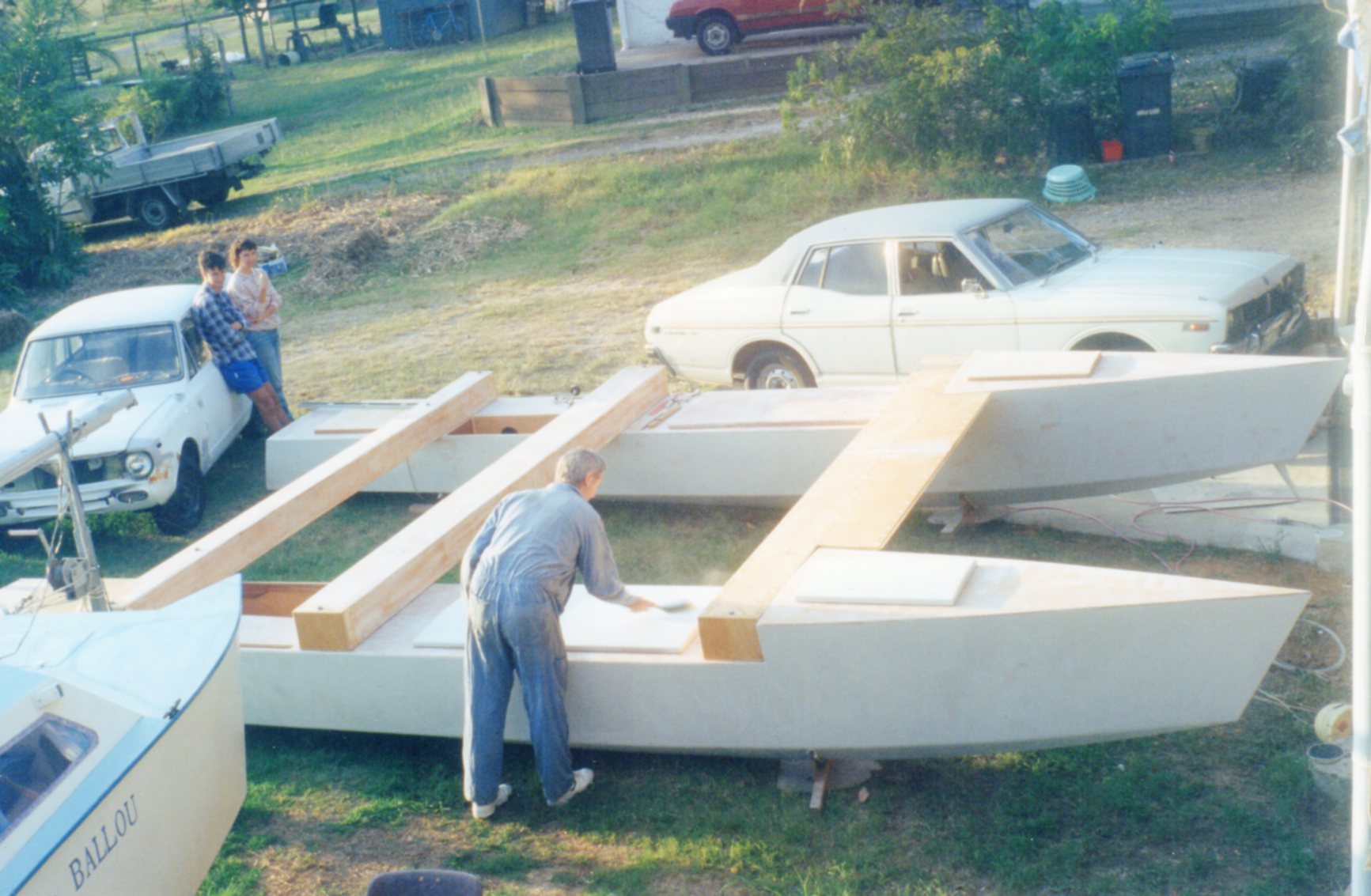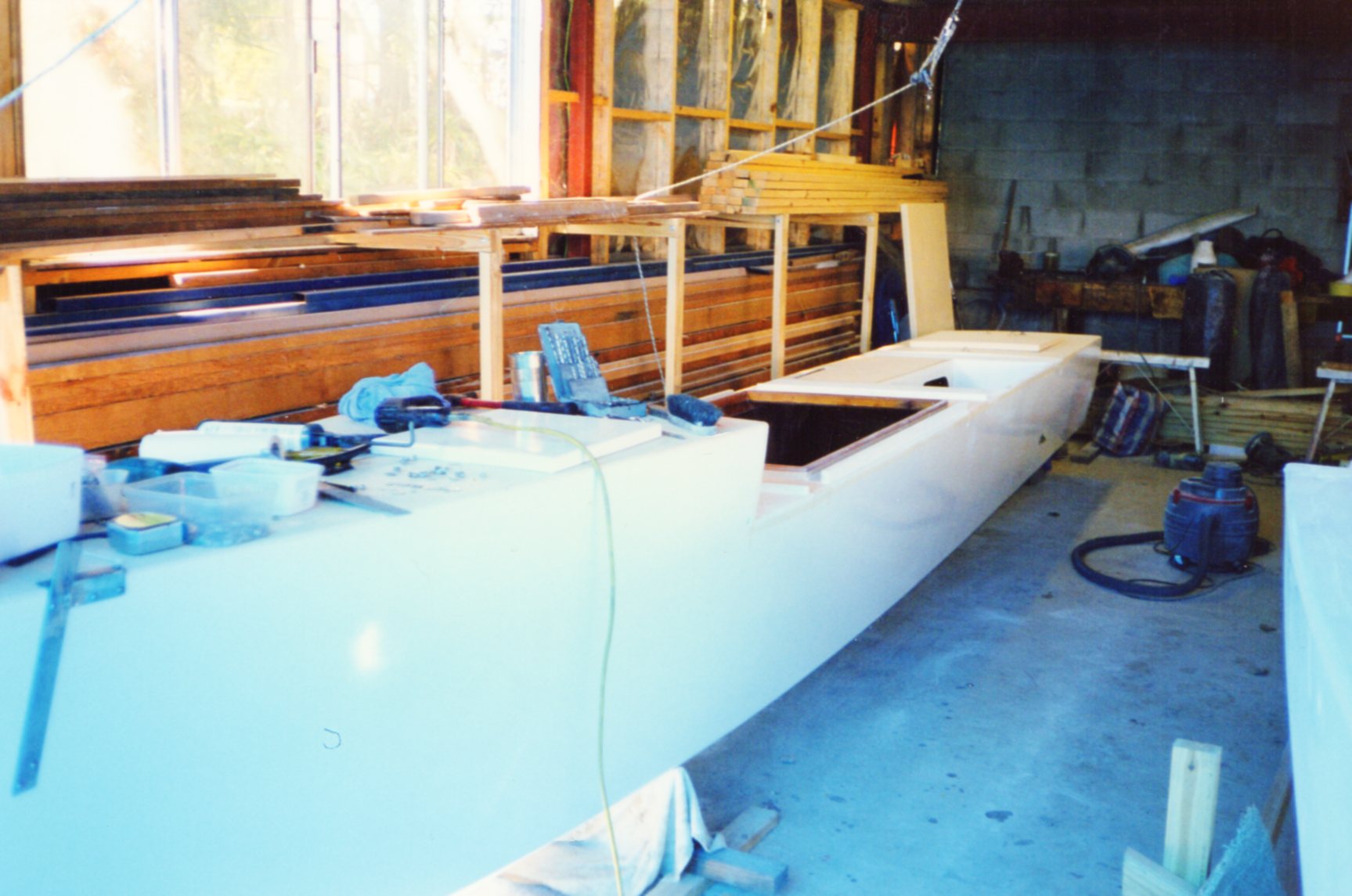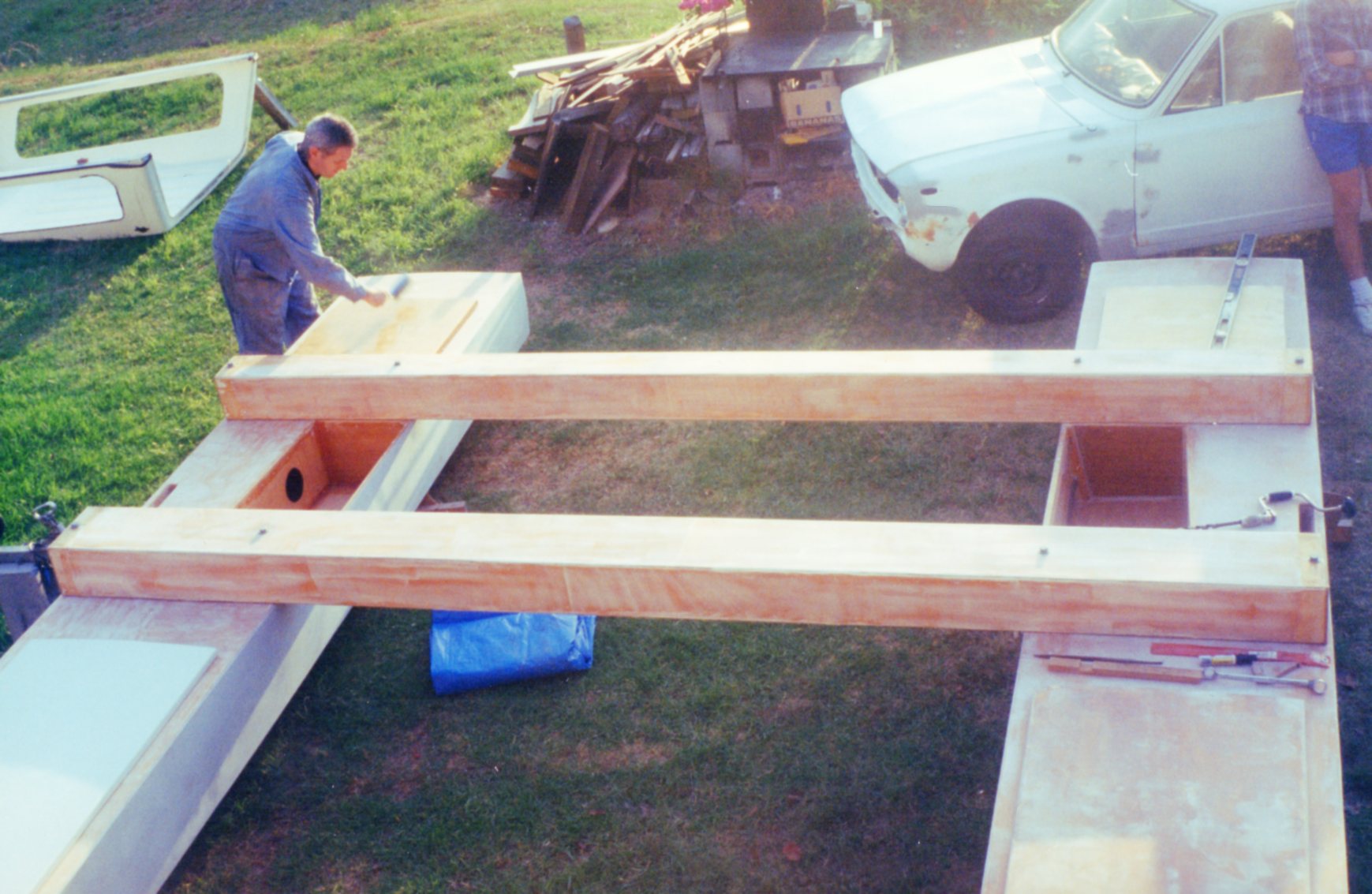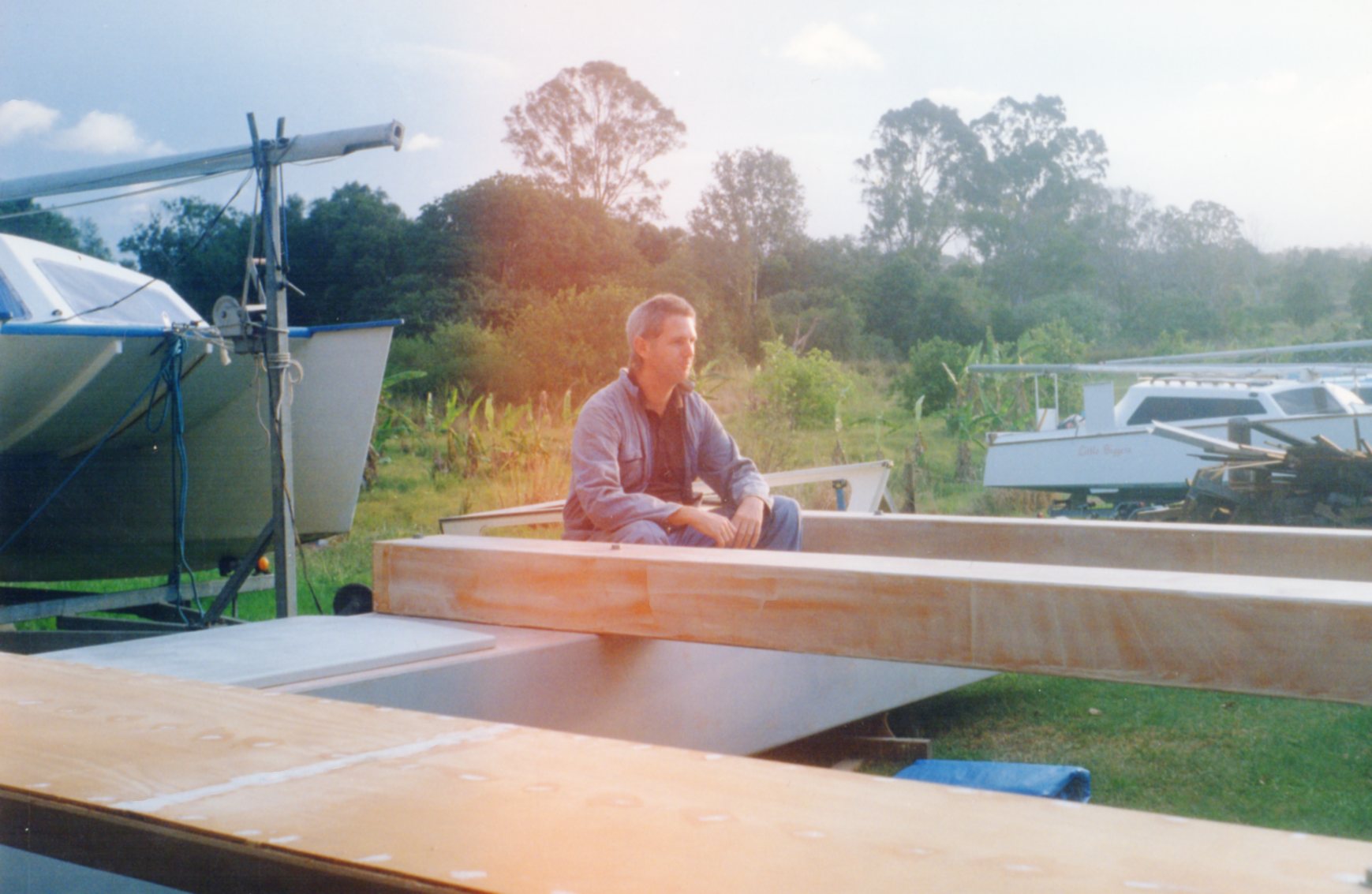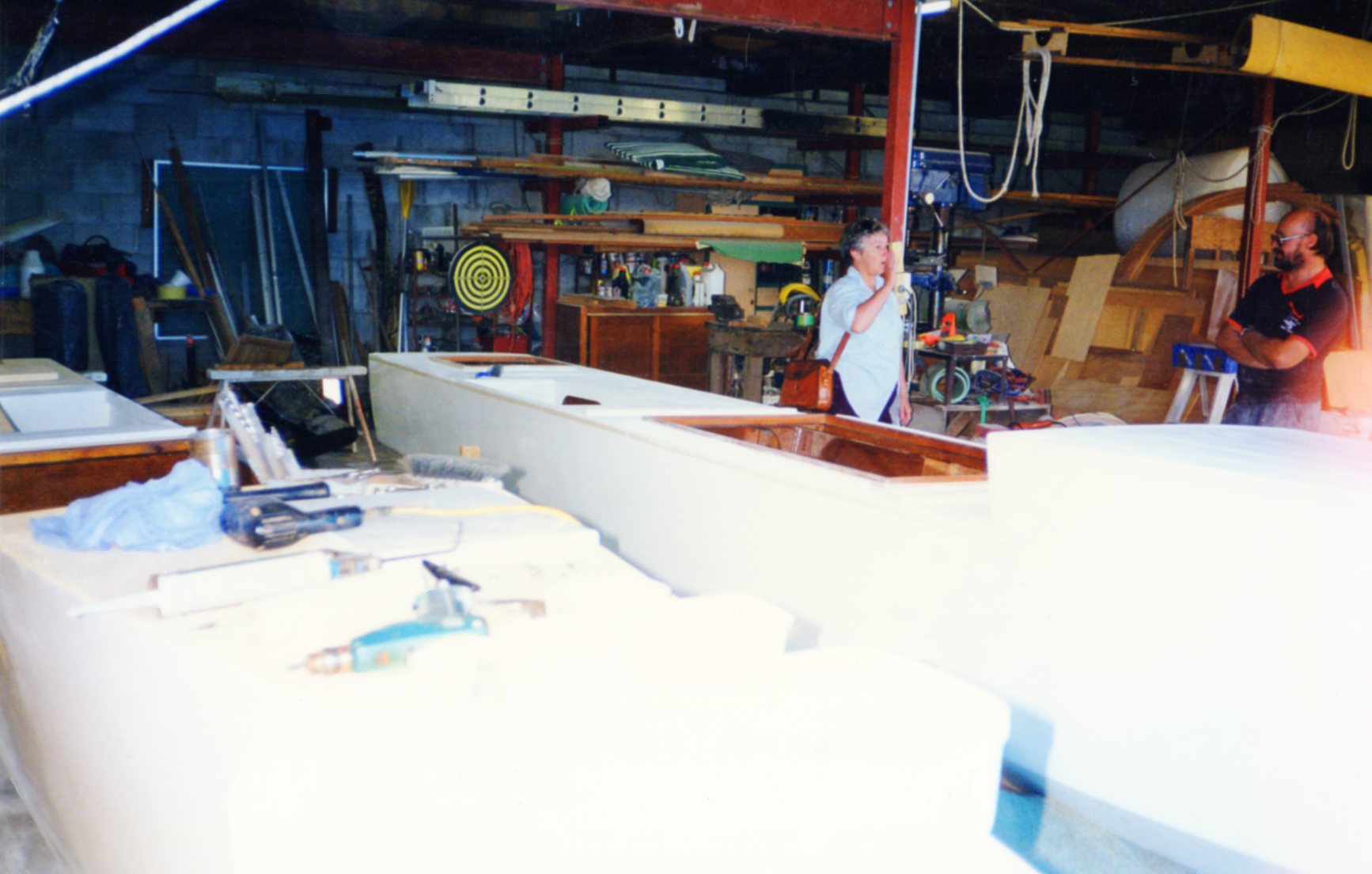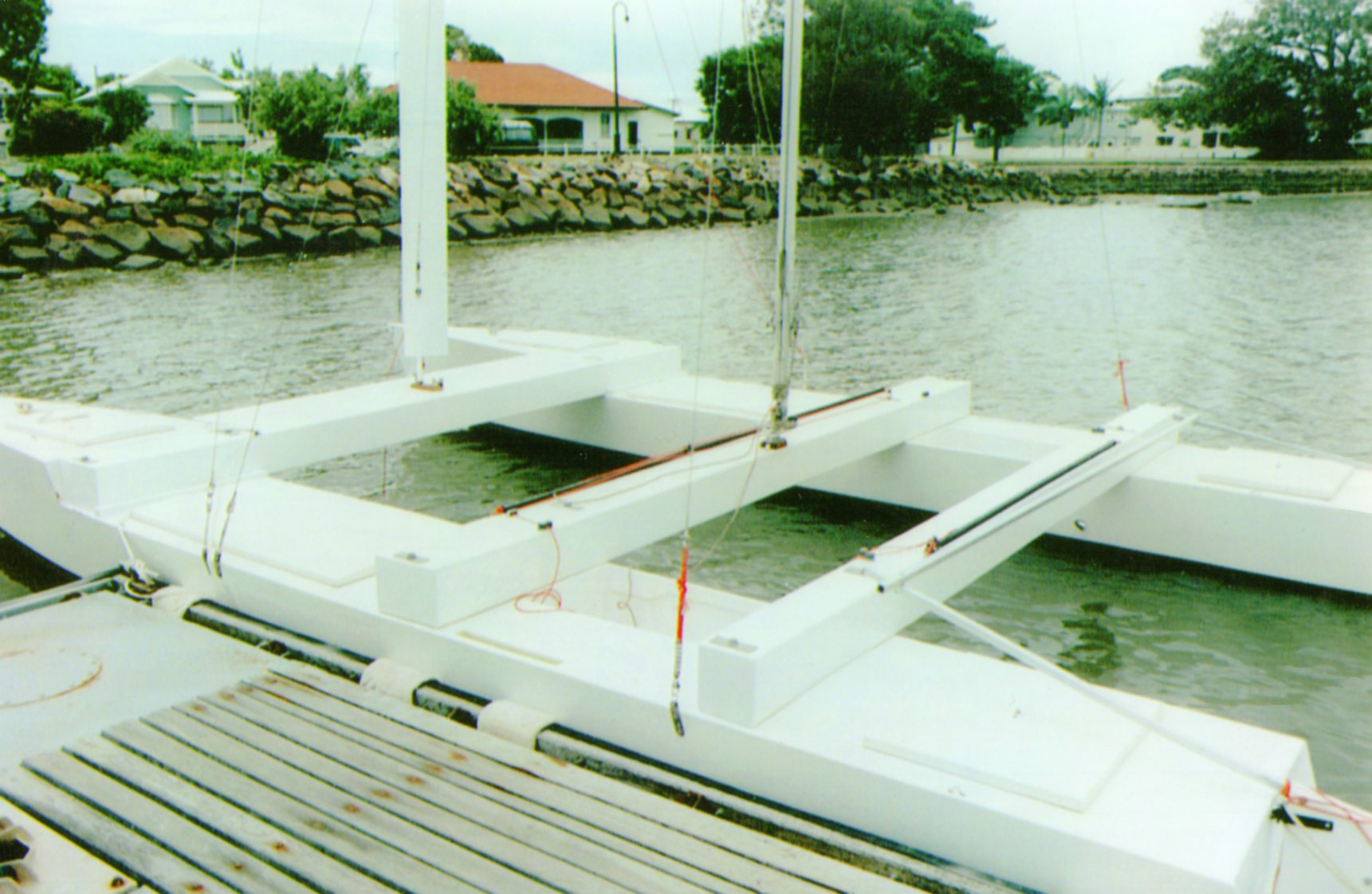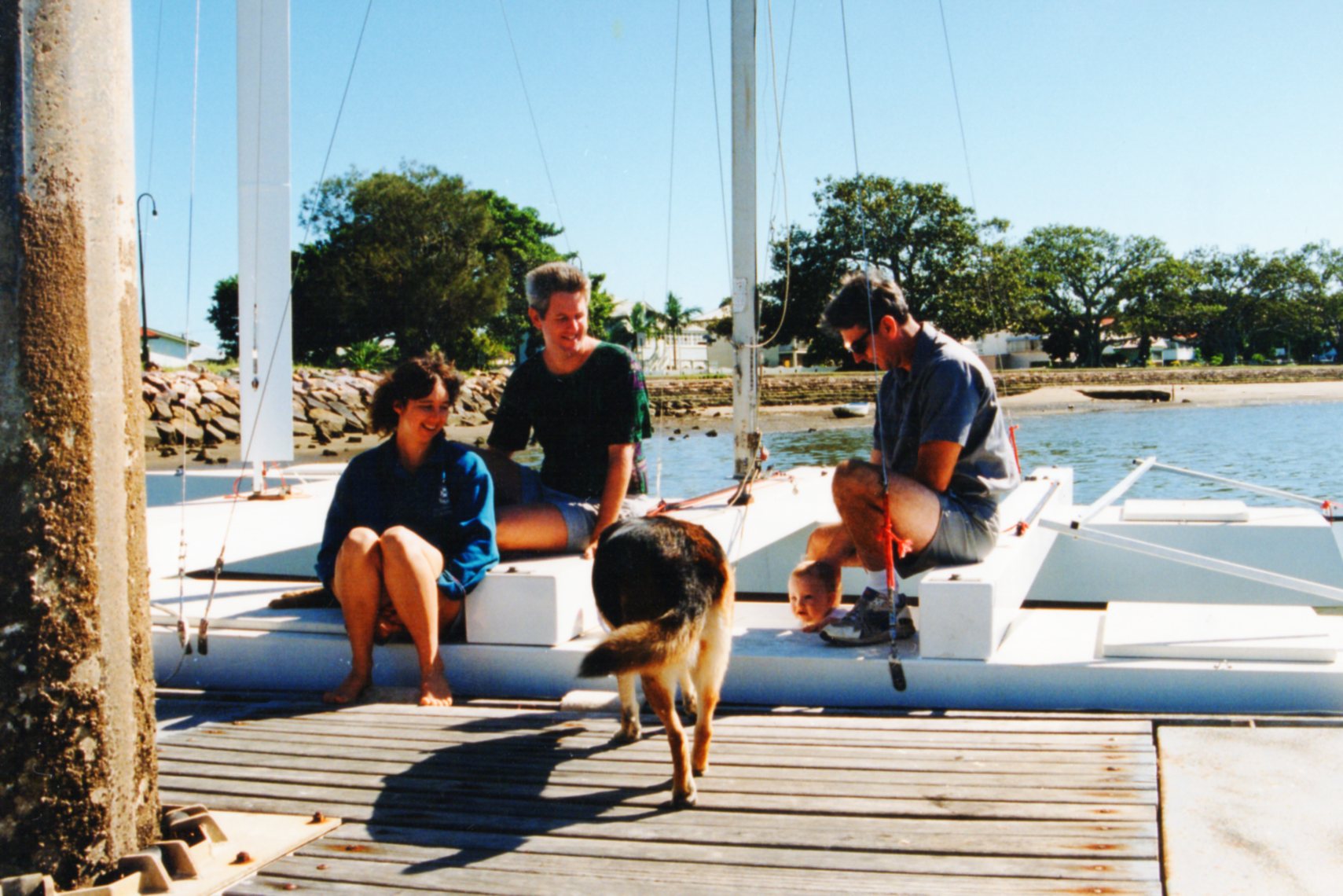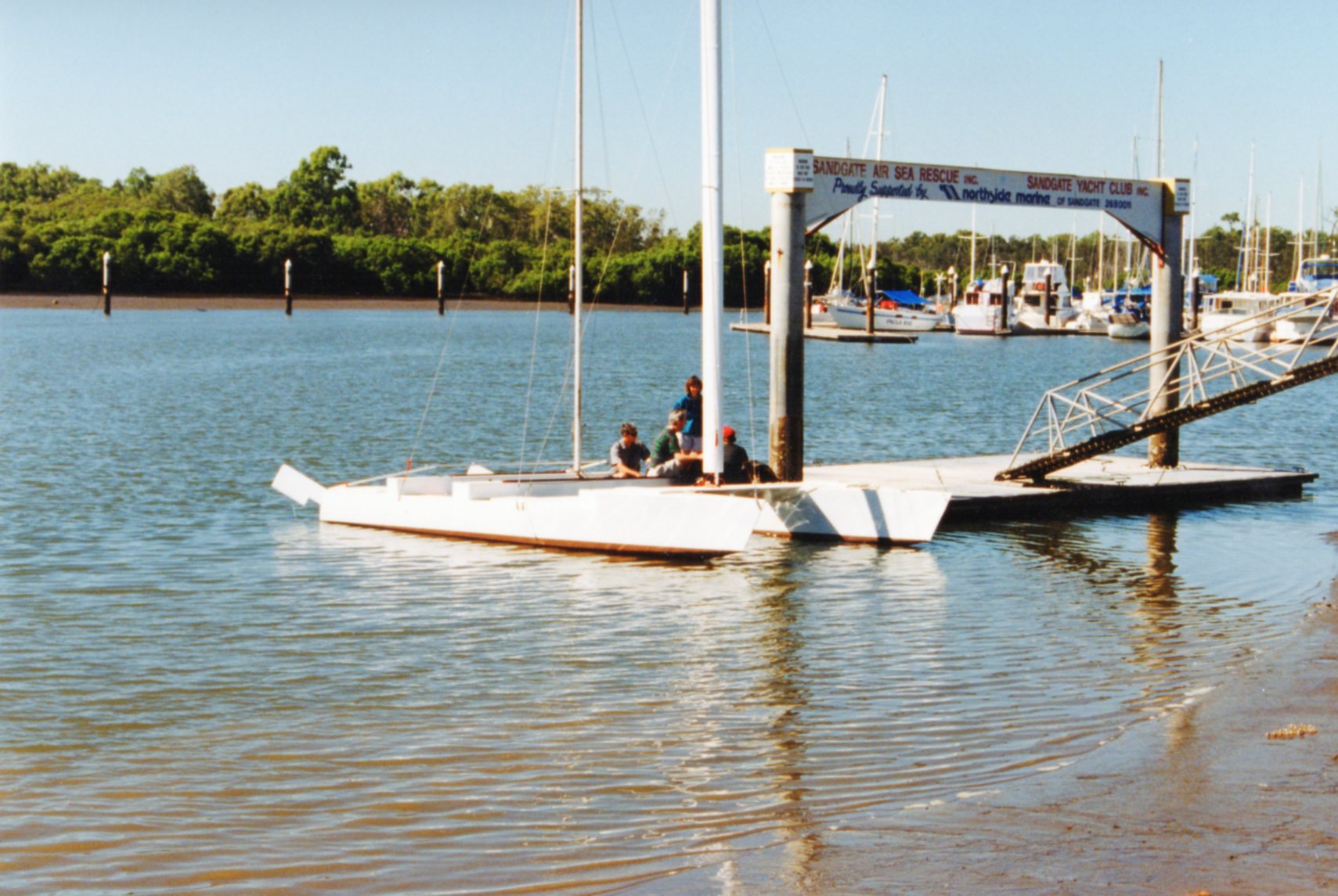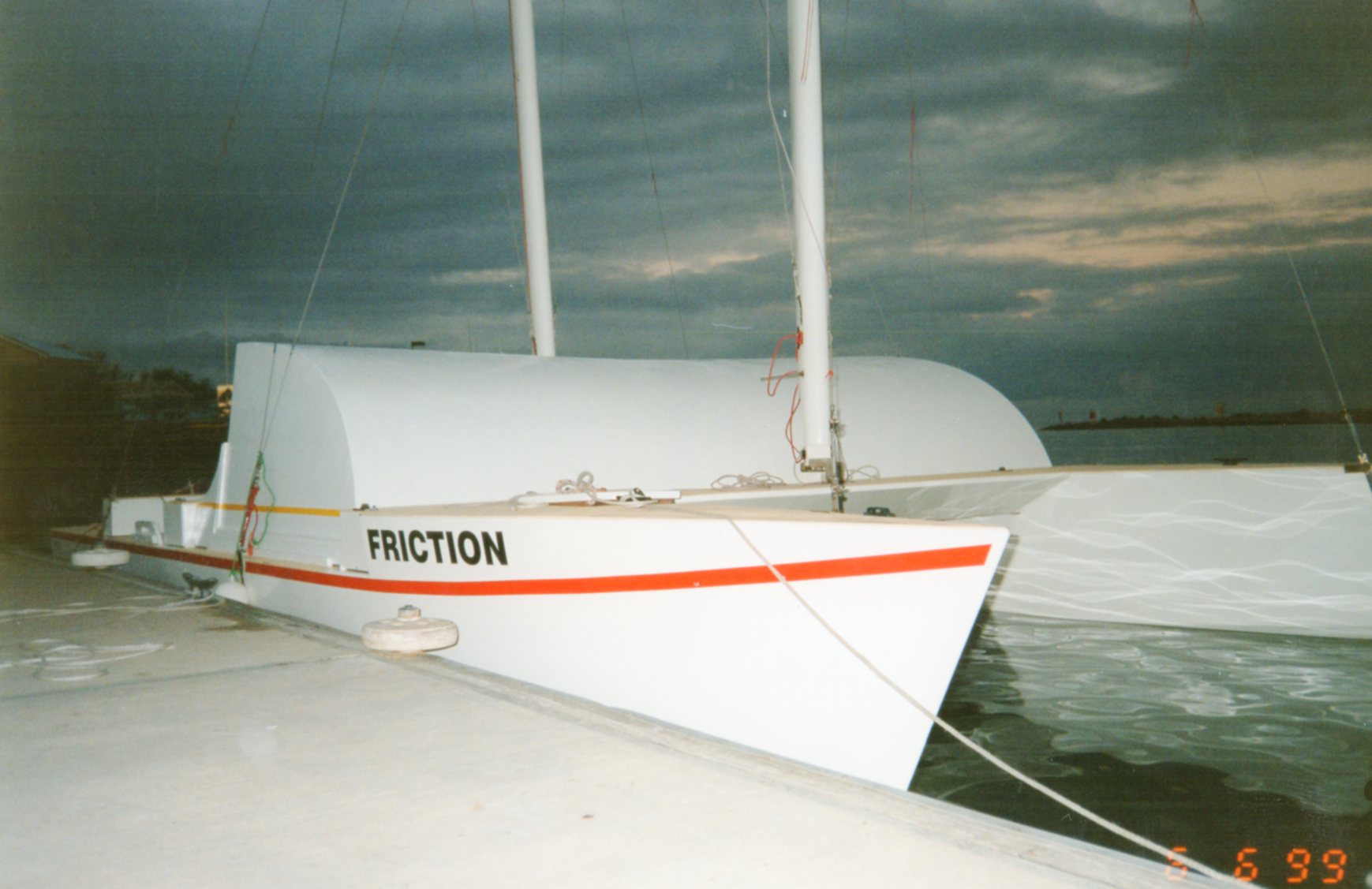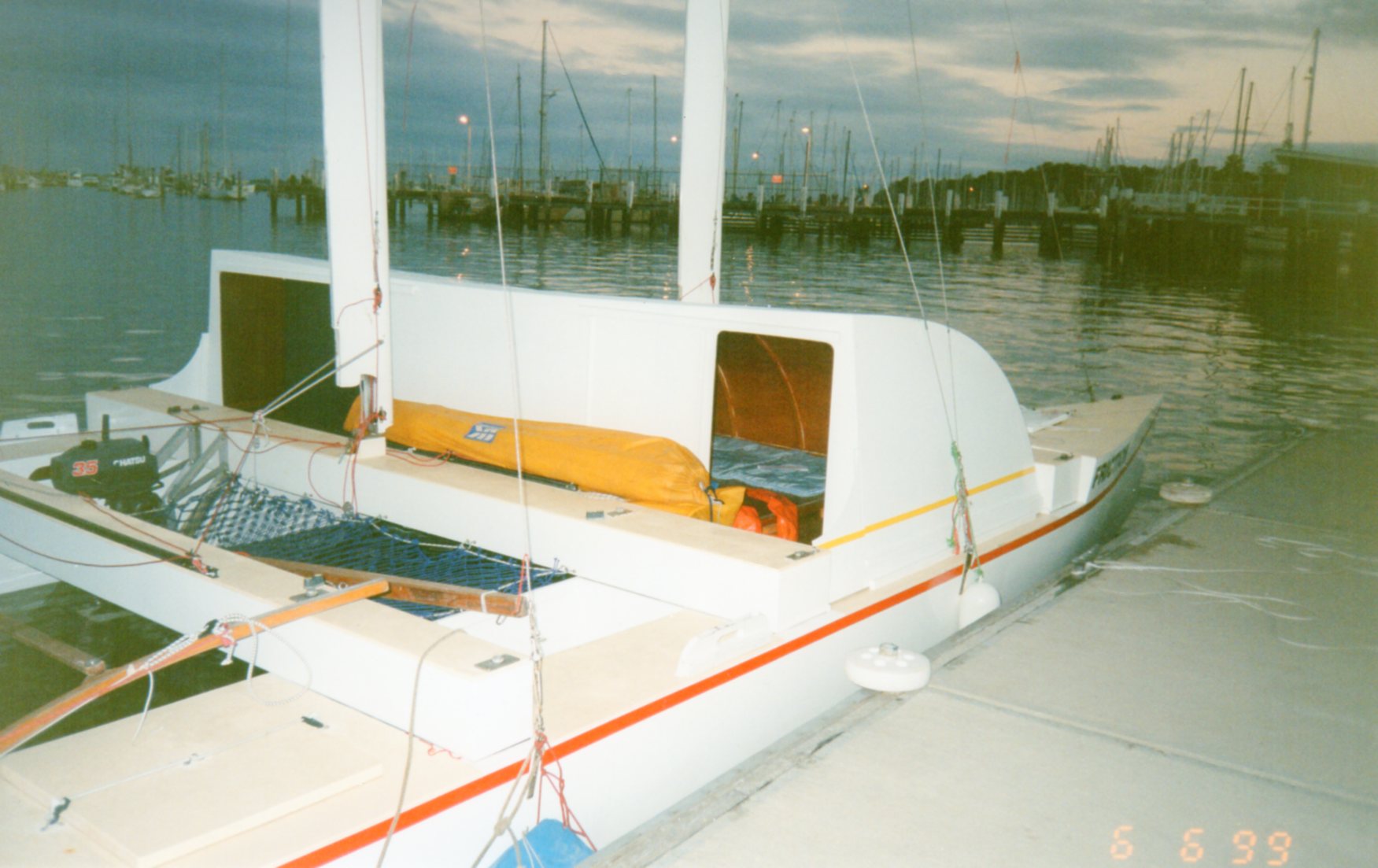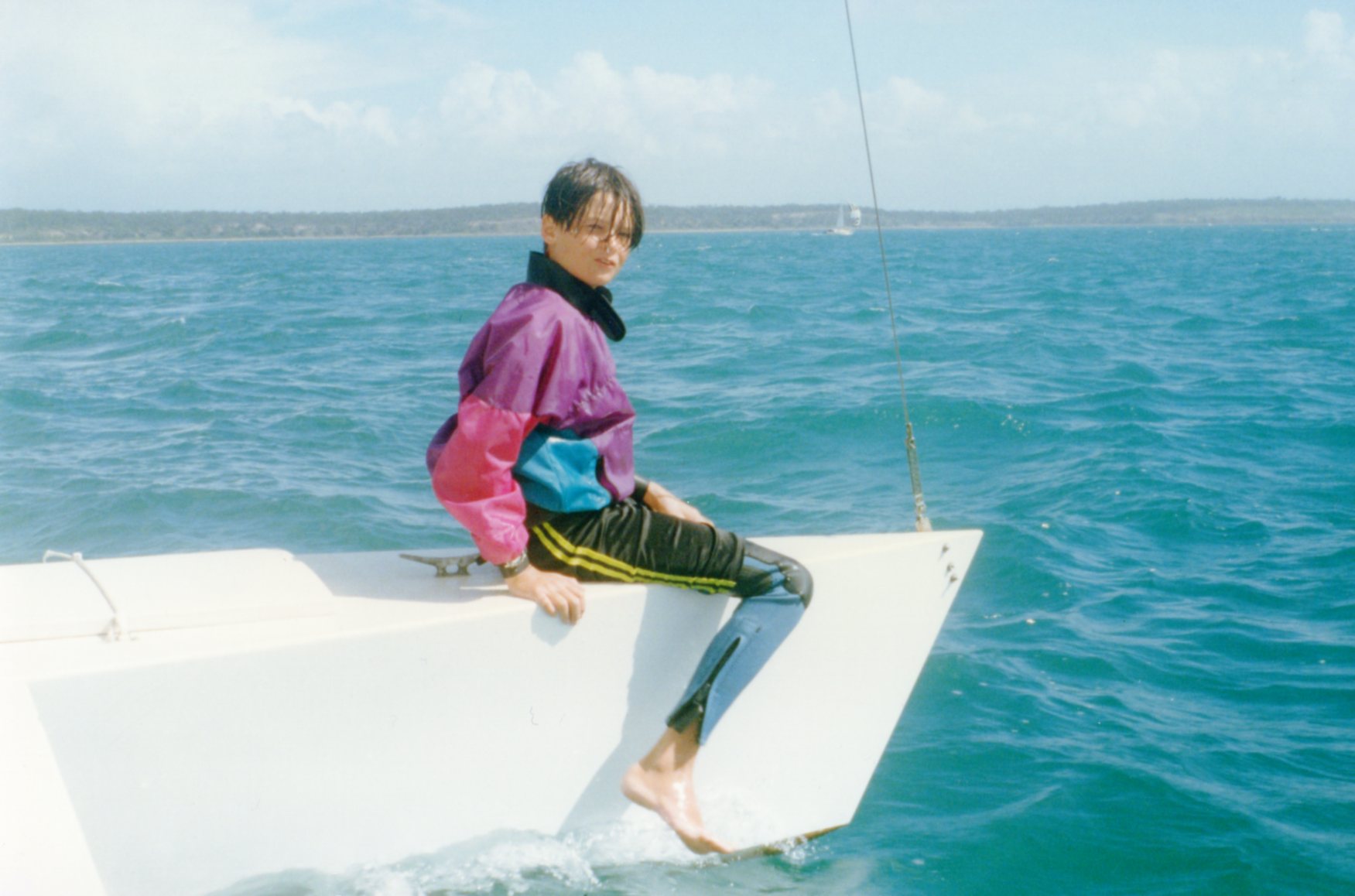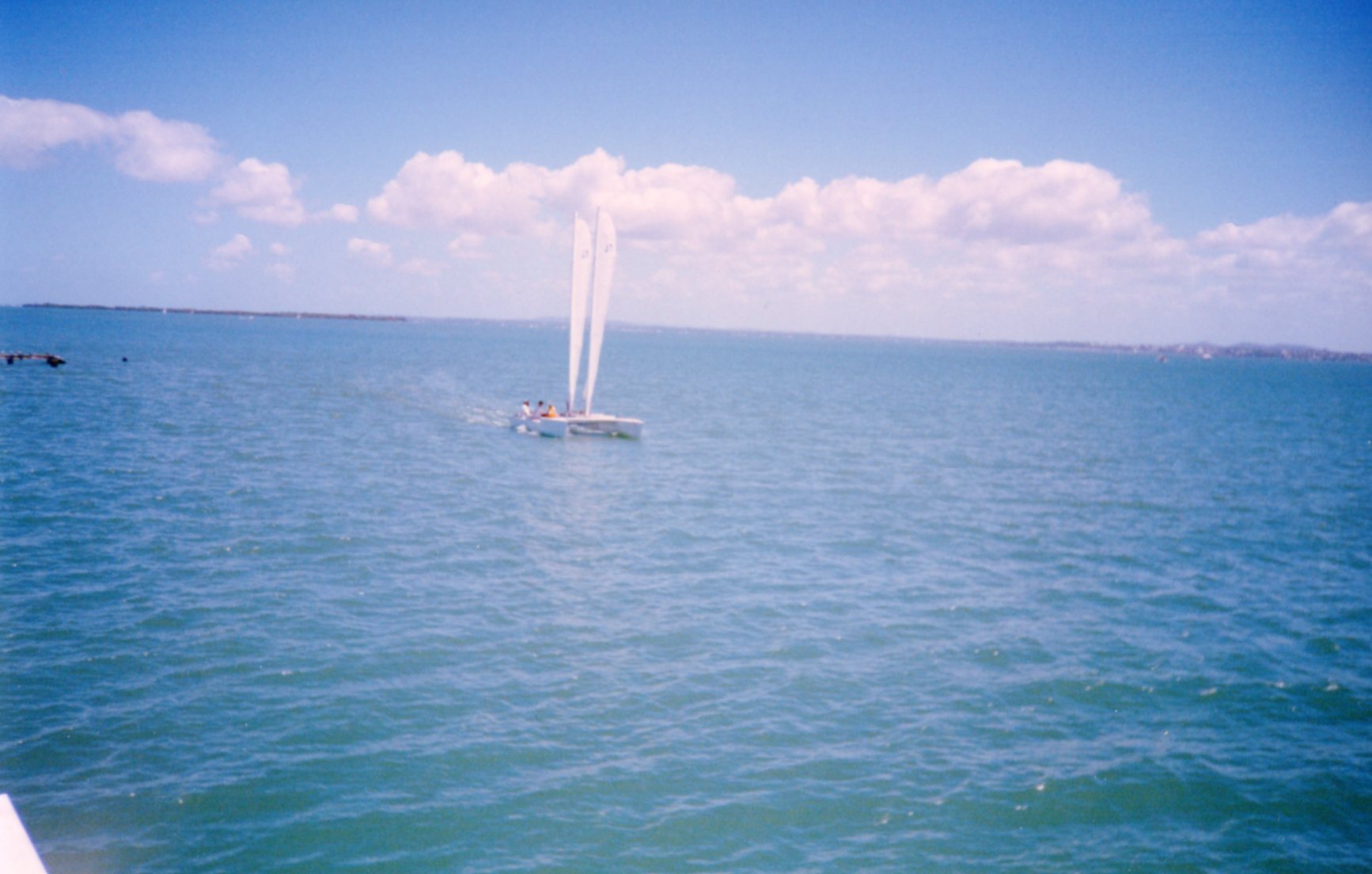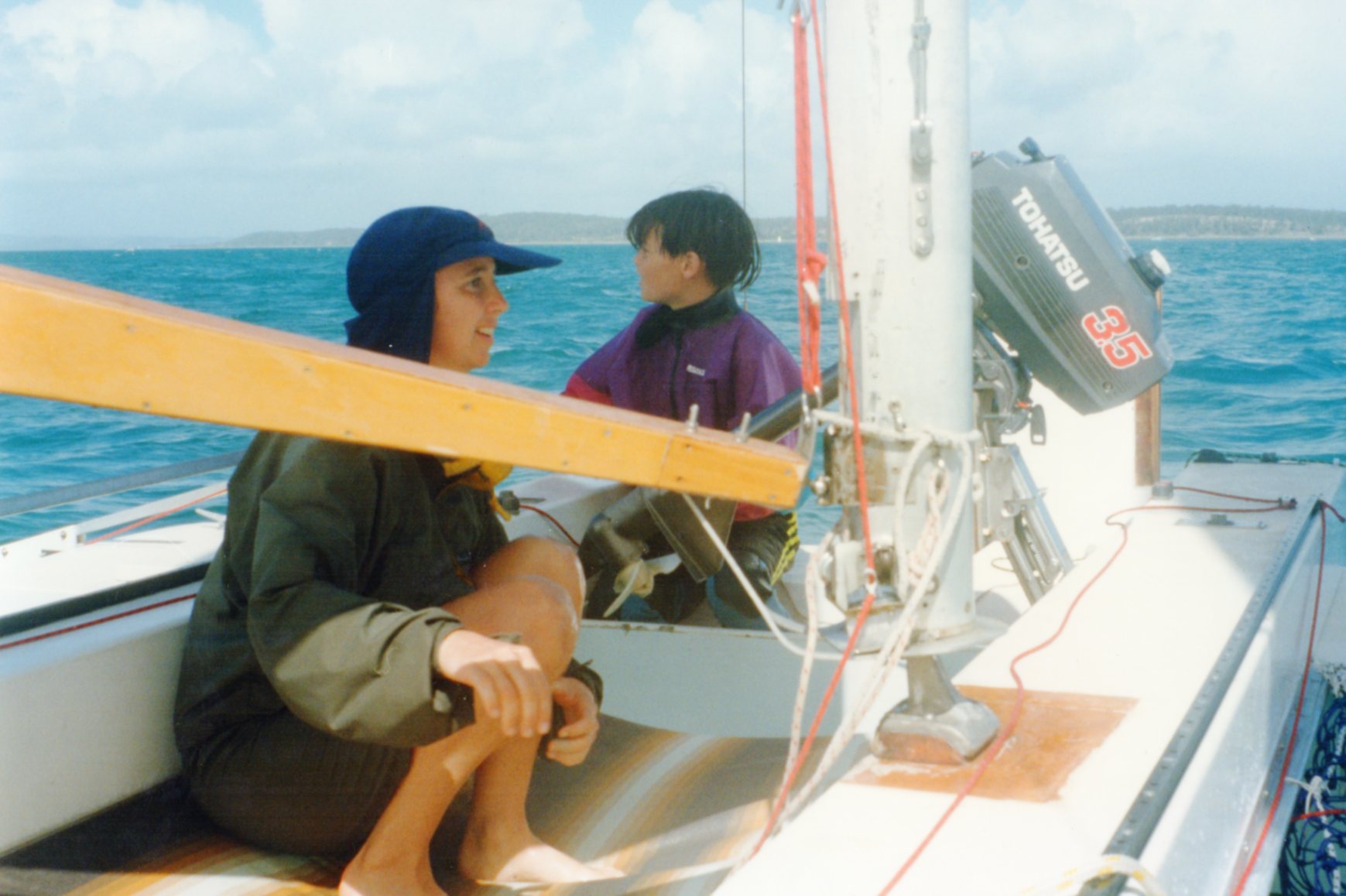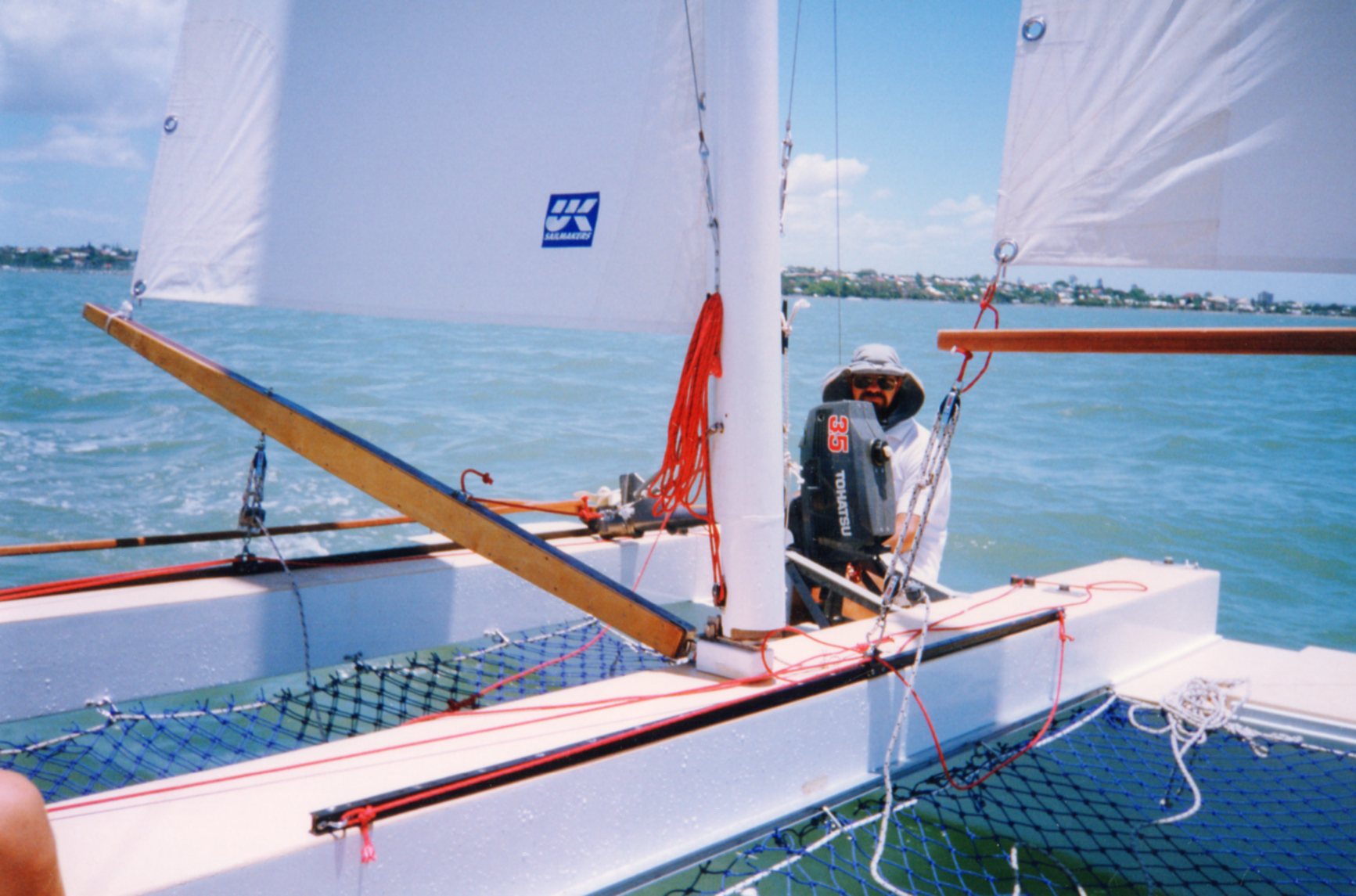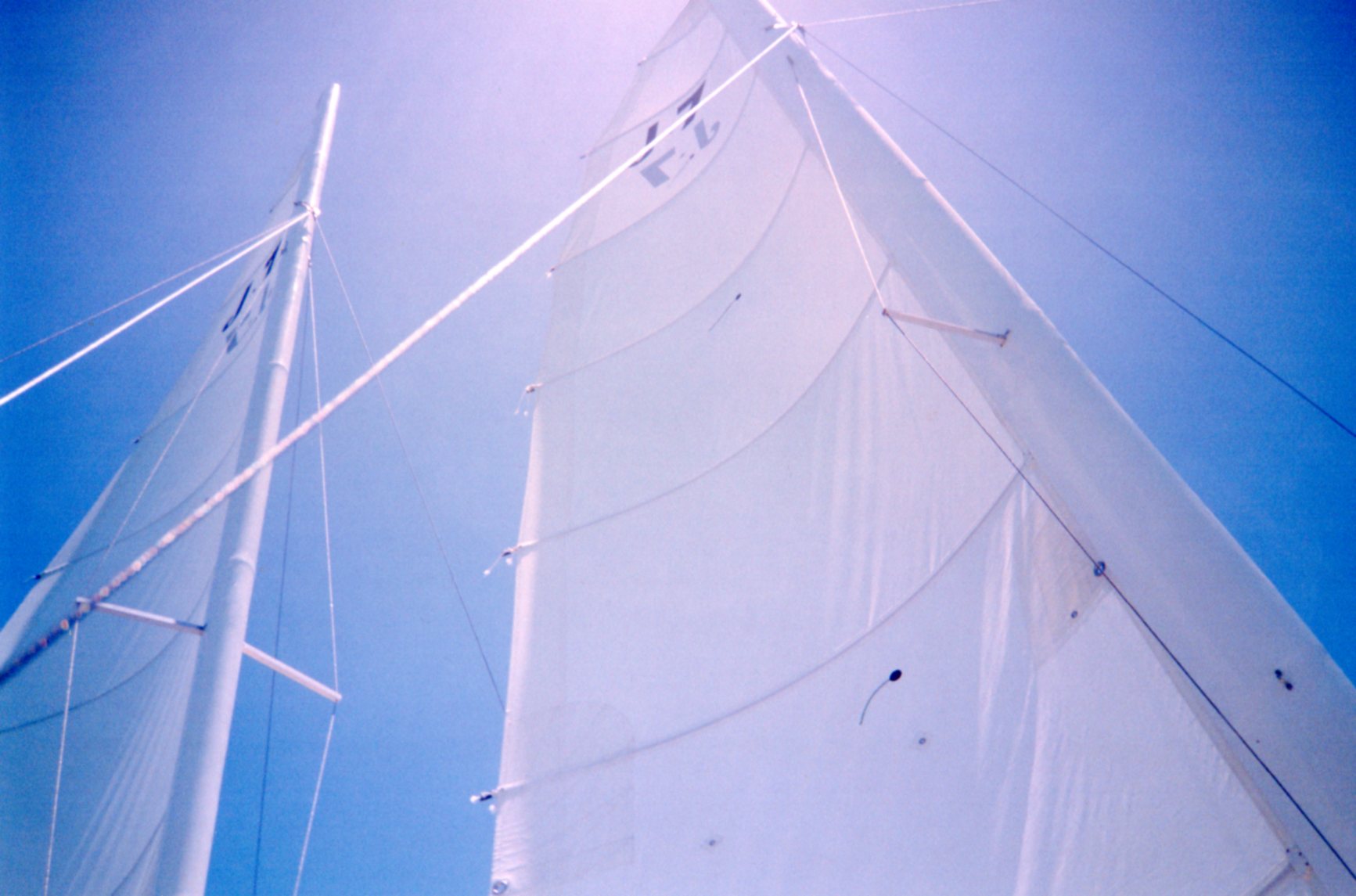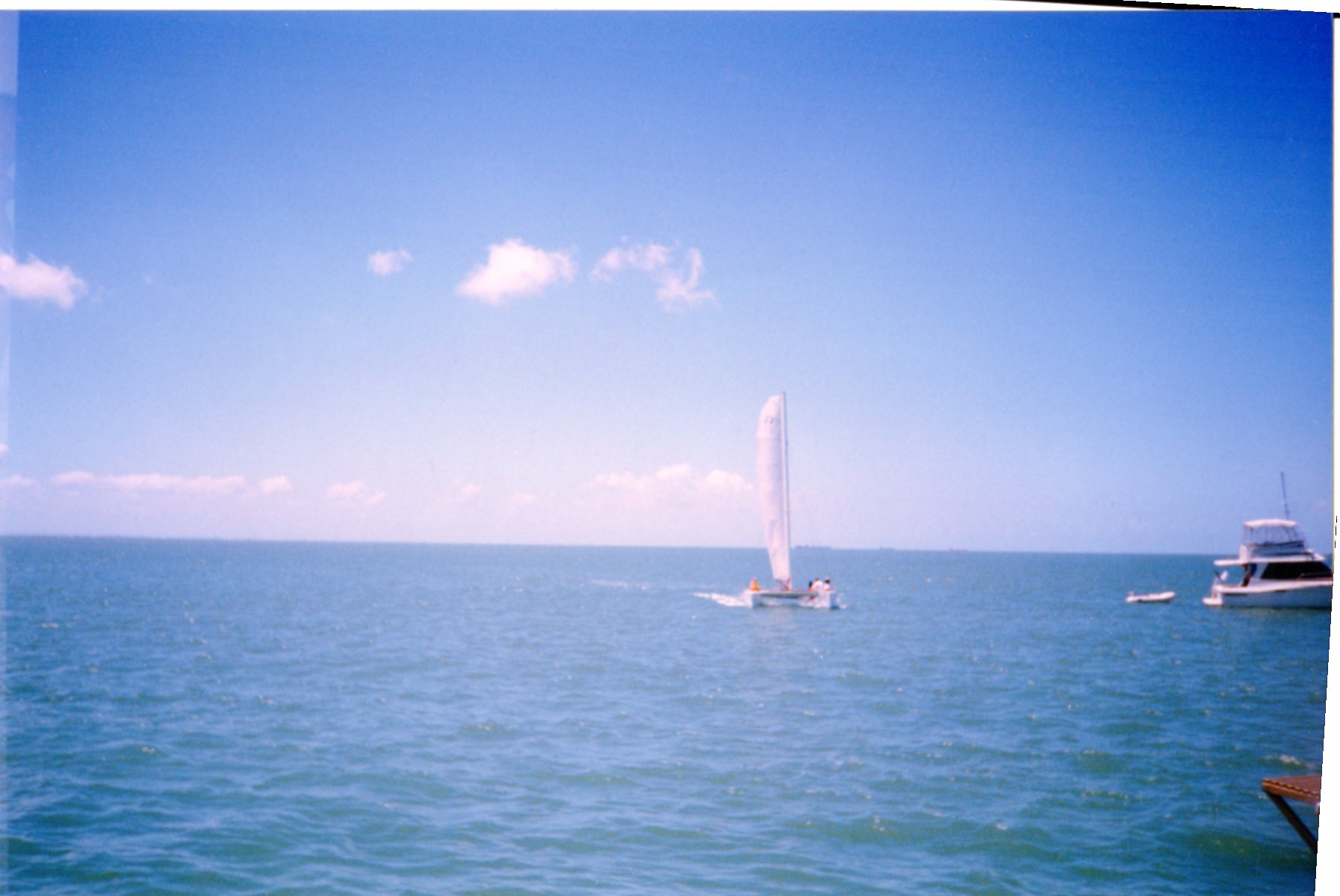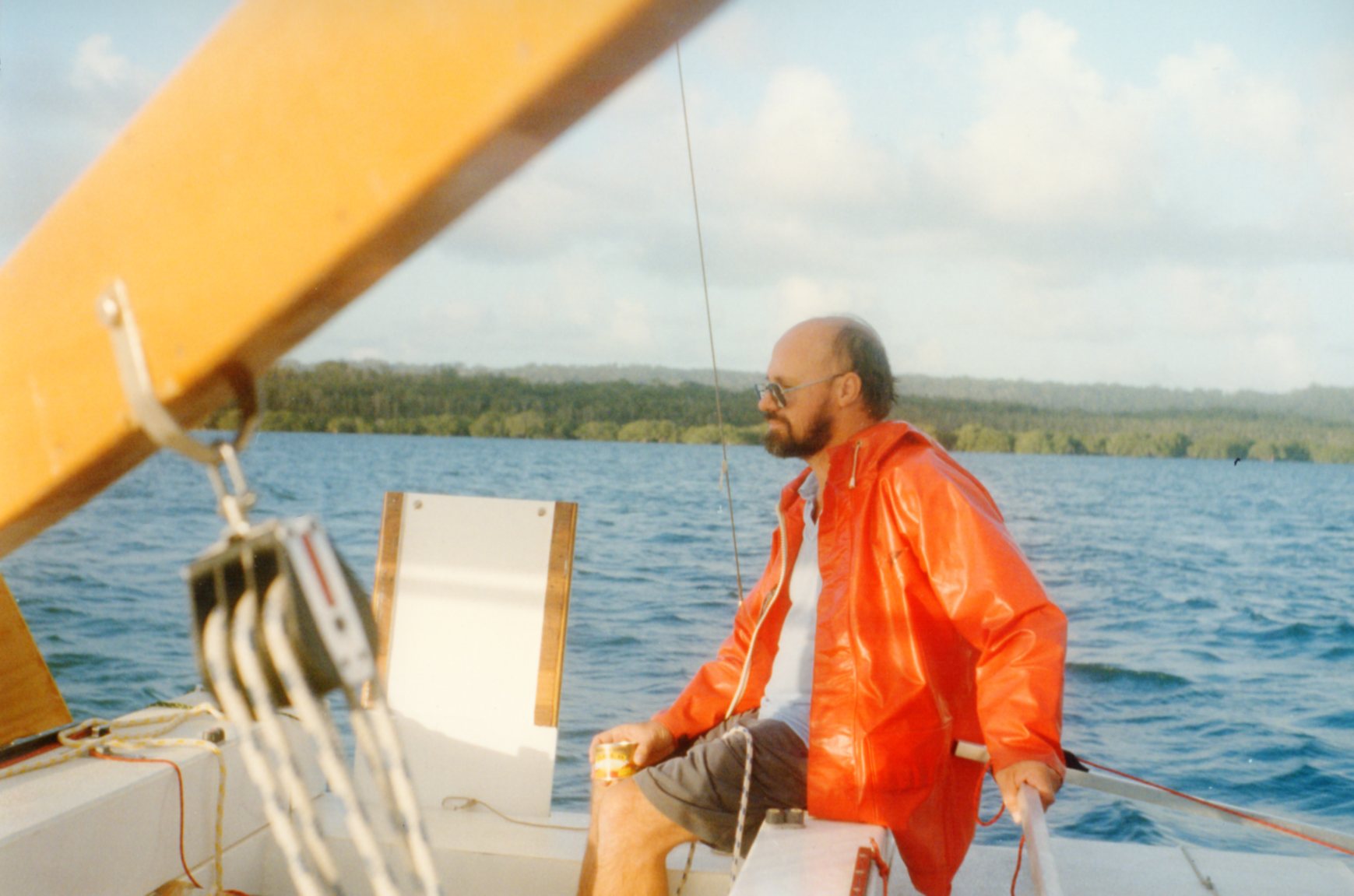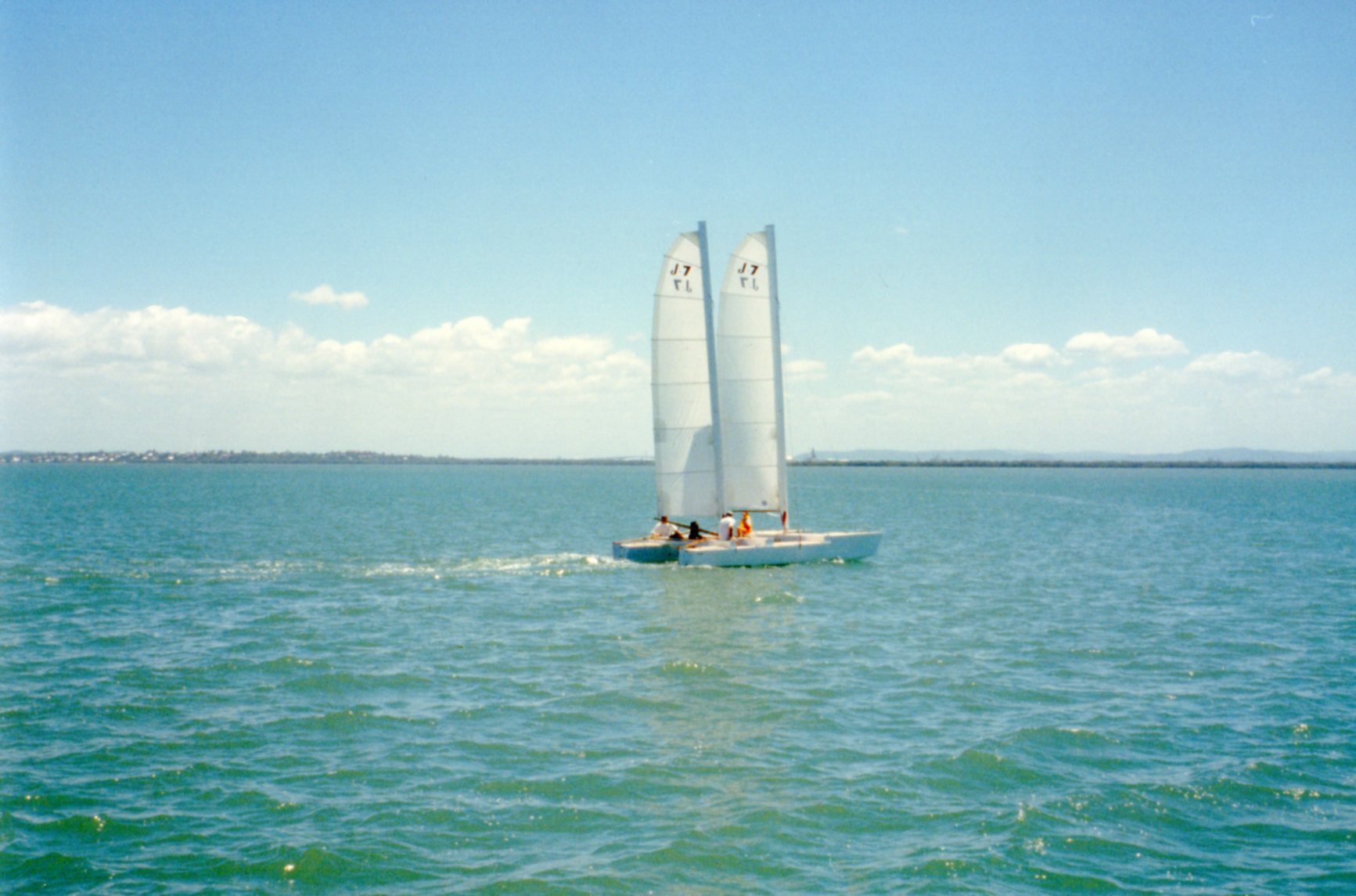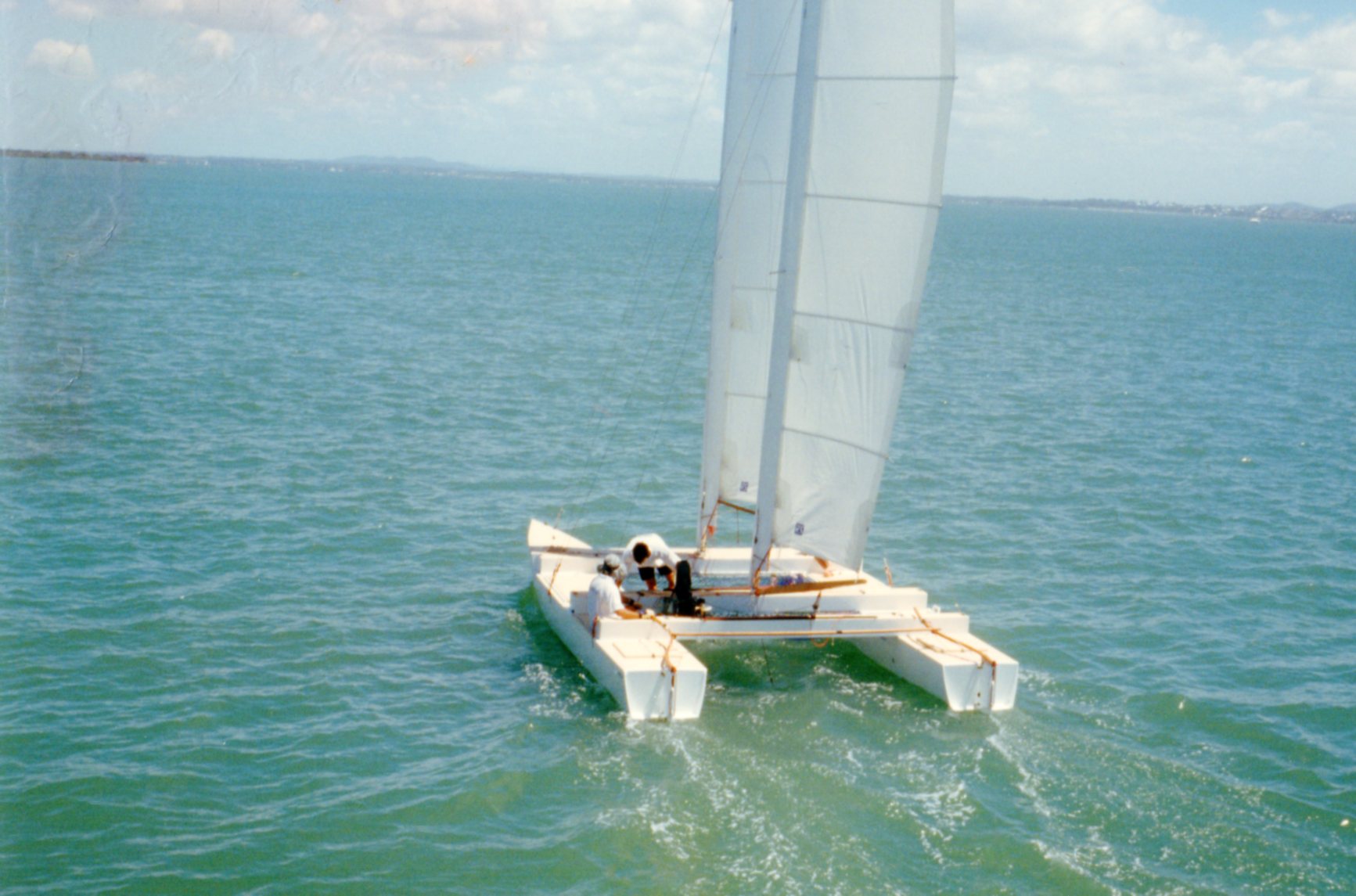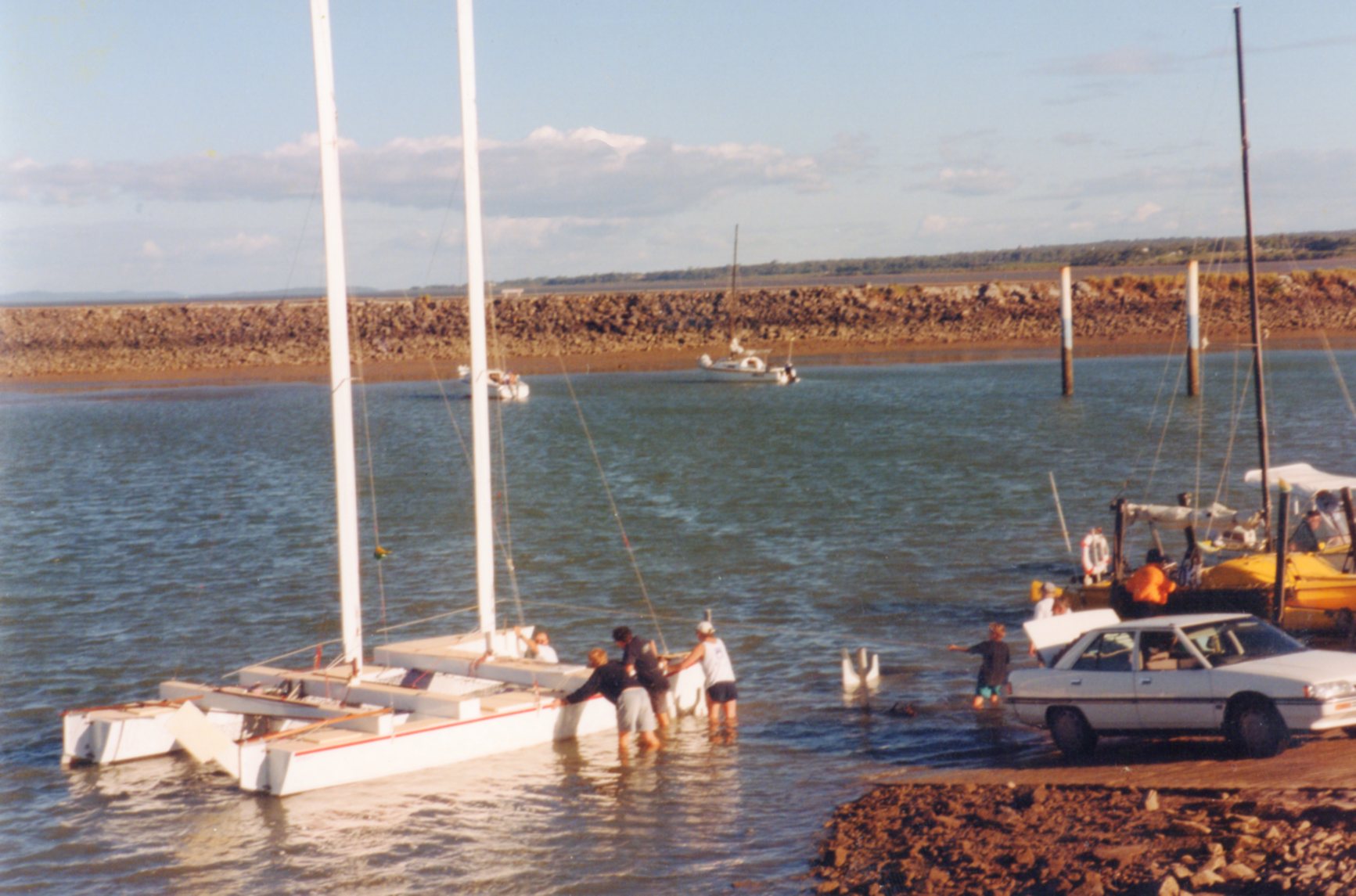
Jarcat Seven
I have built, owned and sailed my J7 for four years. Bay sailing, Clarence River Bridge to Bridge in Northern New South Wales and The Bay to Bay inside Fraser Island each year.The JARCAT SEVEN is a larger cat with a very high aspect rig for performance.The hulls are wider than usual for a racing cat, with powerful aft sections. Fine fwd down low and considerable reserve higher up. The shape is a good load carrier for the role as in-shore cruiser with people & gear on board.
Aft of the cockpits the hulls are accessed via large hatches. A good place to store the gear that clutters a cabin. A large anchor well is built into one bow.Both bow sections incorporate crash bulkheads. (rules). All three beams are timber/ply with flat tops to walk on. Spaces between are filled with netting. The fwd beam is sloped under to deflect waves, the extra width forming a good walkway or deck. A 4.1 metre wide cabin with a double berth, stove and sink may be fitted and removed at will. (the cabin is held in place by the beams). When trailering the cabin fits lengthways on the hulls.
When cruising the J7 has near standing headroom at the galley and a comfortable full size double bed with sitting headroom. Options during construction allow for small single berths in the hulls. There is an optional lower cabin version which still has the double berth but lower headroom in the cabin. When day-sailing or racing hatches cover the spaces in the deck to form a cat more akin to a very big off-the-beach cat. Except this one has cockpits with storage under the open fronted seats, which provides room for a fuel tank, life-jackets, lines, food and drink.
The two masts are "Woodwings" of my own design for improved performance. Two mainsails are used with a spinnaker as an option. The trailer allows the hulls to be moved outward for easy assembly by two adults.(or one fit adult). I have assembled, rigged and launched in 90 minutes. Same when retrieving. I tow with a Hyundai Excel 1500cc sedan.
A J7 "Moreton Bay Jig" won the "Bay to Bay" in 1998. Another J7 "Friction" came second in 1999 and first in 2000. The rig is proving very easy to handle. The square top mainsails are easy to "power-up" and "depower". With both mainsheets released and the helm fully over, the J7 will sit almost stationary. Pull on the sheets and the J7 surges forward. So responsive. Faster than the wind.
"FRICTION" Cost $6000 Australian to build (1997). Western Red Cedar timber, plywood skins, Epoxy resin fibre-glass, epoxy undercoat,polyurethane gloss, Dacron sails, woodwing masts, nets and all hardware.
